Thuja is a coniferous decorative plant, which in recent years has gained tremendous popularity among gardeners and landscape designers. Beautiful and well-groomed thuu will become an excellent supplement of the garden composition, will allow to embody all the most unusual and interesting architectural plans. Few people know that the thuja allocates essential oils, which are beneficial affecting air cleansing. That is why some types and varieties of the Tui are perfectly suitable for growing at home.
The household will become an excellent interior decoration and clean the air from pathogens. Shau \u200b\u200bat home can be placed in a pot or put in a container and put on a balcony or glazed loggia. This will create an incredible atmosphere at home.
In this article, we will consider how to grow so at home, we give a description of the most suitable for the home of varieties of this culture.
Description of the Tui and the peculiarities of its cultivation at home
Thuja is a decorative coniferous plant, which belongs to a large family of cypress. The natural habitat of the Tui is the territory of East Asia and North America. It was here that for the first time began to use this decorative plant to decorate the garden plot. In addition, it was used in countries such as Japan and China, used as a beautiful and original bonce. According to Buddhist philosophy, Tui tree is capable of restoring vitality, gives the surrounding health and longevity. That is why the cultivation of the Tui home in the pot will bring harmony and comfort to the house. In addition, the tuya highlights essential oils into the air, which purify the air and fill the room or an office of a bitter-tart aroma.
The name of the plant "Thuja" went from an ancient Greek word, which in translation denotes "sacrificing, anonymous". This is due to the fact that in the homeland of the growth of the Tui, including Buddhist monks, burned the fragrant varieties of the Tui to ritual purposes.
Many languid, whether it is possible to plant at home, because this culture is quite high and in nature can reach up to 11 meters. Do not even doubt, today a large number of dwarf and spherical species and varieties are displayed, which are ideal for indoor cultivation.
Description Tui:
- Thuja is an evergreen coniferous plant, which has wonderful decorative features.
- This culture has several more names that transmit the essence of the Tui - the tree of life, the iron tree, the northern cypress. With the cypressovik, they compare quite often, many even confuse them. However, these are completely different cultures, although both can be raised at home.
- The breeders did not bring special types of thuly for room cultivation, but for this purpose you can easily use the decorative species and varieties of this plant that have dwarf molds.
- In culture, the Tui tree can reach 11 meters, and in nature there are copies of up to 80 m in height. For indoor cultivation, you can pick up varieties with a height of 1-1.5 m.
- Young Tui trees are covered with needle cheese, which is very soft and has a light green shade. With the age of needles, they become dark green and covered with scales, due to which this culture is often confused with a cypressive.
- Fruits ripen on Tue, which are rounded or oblong chishechki. It is in them that can ripen seeds that can be used to reproduce the Tui at home.
- Tui at home is grown predominantly the two most popular decorative species - the Thuja Eastern and Tui Western, which are vibrant all other types and varieties.
- Shau \u200b\u200bat home can be planted in any containers, the main thing is to choose the optimal size. With this culture is distinguished by non-commodity in planting and care, so the cultivation of such an exotic room plant will not cause you absolutely no difficulties.
Tuisie types and varieties for room growing
If you want to grow so at home, then you first need to pay your attention to the two most popular types of this culture, which are in great demand in Russia. It is exactly the Eastern and Tyu Western most often can be found in landscape design, in landscaping of urban streets and household plots. The varieties of these species are not better suited for growing at home.
Western Thuja:
- This type of thuu was introduced into the culture in the 16th century in Europe, after which this decorative tree was flooded with botanical gardens, parks, streets and gardens.
- It is a slow-growing tree, which in height can reach 1.5-20 m, depending on the specific variety.
- Much less often there are shrub forms of Tui Western.
- Crown is quite compact and neat, has an ovoid or pyramidal shape.
- In young plants, the bark is reddish-brown, with age becomes a brownish gray with stripes.
- Chesoy-shaped light green shade. The top of the needles is shiny, and the bottom is matte.
Arbor vitae:
- It is an evergreen coniferous tree, which has another name - biota or tree of life.
- In nature grows in the territory of Western China, northeast of Japan and Korea. You can also meet in the east of Russia and Ukraine.
- He is a long-liver. In nature can live 1000 years, in culture - 150-200 years.
- In the height of Thuja East can reach 10-18 m, the crown is formed by vertical long shoots.
- The needles has a light green or yellow-green shade.
- There are several forms of Eastern Tui: tall, short-cut and dwarf. For cultivation at home, dwarf variety is suitable.
Popular thuja varieties for home:
- Grade "Danika". This variety of the Tui was removed by the Danish breeders and is a carlikov. Thanks to a very slow growth, Tuya Datika is ideal for premises. In height, it can maximally reach only 1 m. It is characterized by a reddish layered bark and a soft, bright green cheese.
- Graduate Tui "Teddy". Also dwarf variety of Western Tui. In height can reach 40-50 cm, therefore it is considered an excellent option for homemade cultivation. Krone Tui Teddy has a spherical shape, which regularly requires trimming to impart care and correctness of the outlines.
- Sort "Little Champion". Very beautiful variety, which is characterized by slow growth. The crown has a neat ball shape, which is formed tightly adjacent to each other with knens of needles. Height can grow up to 1 m.
- Grade "Little Giant". Also a dwarf variety, which in height can reach about 60-100 cm. It has a beautiful spherical thick crown.
- Graduate of the Tui "Smaragd". It is a squat evergreen shrub, which is characterized by a weak branch. Krone has a pyramidal variety. In the height of Thuja Smaragd can reach approximately 1.5-2 meters. Differs in bright light green glossy cheese. It is also suitable for growing at home or office, balcony or loggia.
- Grade "Erikides". The grade is a small tree that can grow up to 1.5 m in height. Krone is formed by long, few, filamentous shoots. Sharo-shaped and wide cone-shaped.
- Variety "Amber Glow". This grade also refers to dwarf and is a tree up to 1 m in height. It is distinguished by a beautiful but uneven spherical crown. Color of yellow conifers.
- Grace of Tui "Gloth of Gold". Also a low grade of the Tui, which is characterized by a cone-shaped crown, which is formed by yellow cheese. At winter, the needle acquires an orange shade.
- Grade Tui "Golden Taffet". Very interesting variety with two-color cheese, which is formed by green and orange splashes. Crown has a spherical, slightly closed the crown. Height can reach 60-100 cm.
- Sort Zebrina. It is a slow-growing tree, which by 10 years reaches a height of 2 meters. A distinctive feature is considered to be a green needle, which penetrates yellow and white stripes, from here and the name of the variety.
- Grade "Vipkord". Quite interesting and unusual sort of Tui, which is characterized by drooping drooping shoots, it is not branching. It grows very slowly, to 10 years may grow by only 30 cm.
How to propagate fifth home
You are free to try breeding arborvitae cuttings at home, as well as seed propagation. Each of these methods has its subtleties and nuances that you need to be sure to know and remember that in the end, you grew beautiful houseplant.
Seed propagation Tui house - instructions
- Thuja from home the seeds grow possible, but there is no guarantee that a young tree will retain all maternal traits such as yellow needles.
- In addition, it is quite a lengthy process. To get a more or less large plant can take up to 6 years.
- For planting is necessary to use necessarily fresh seeds, as in a warm room temperature, they are not stored.
- Collect them directly from the plant can be somewhere in September or October, after their maturation. To do this, cut the lumps with a small part of the branches on which they hang.
- Next, place the branches in the bright place, where not exposed to direct sunlight. Soon buds unfold and you will be able to get the seeds.
- Seeds need to pre-stratify. To do this, take a small container and fill it with sand. Moisten it and sow the seeds on top of arborvitae, lightly sprinkled with clean sand. Put the container in the lower compartment of the refrigerator for the whole winter.
- In the spring the seeds are extracted and prepared for planting. In a suitable container, pour peat and sand, all well-moistened.
- Further, it is recommended to treat the soil with a weak solution of potassium permanganate to destroy all germs and parasites.
- The seeds need to sow at a depth of no more than 5 mm. You can sow in each pot one seed, and it is possible to grow a few seedlings and choose the most healthy and strong.
- The container with the seeds need to be covered with glass or foil and put in a place that is in the shade.
- For watering using a spray bottle. When the seedlings seem, glass is removed.
- When the seedlings grow stronger, they can take seats on individual pots.
- For a decent bush arborvitae may need 3-5 years.
Reproduction arborvitae cuttings at home
- Who has ever fond of the theme of planting and growing arborvitae, wondered how to grow a fifth of branches at home. There is nothing complicated. This method is simpler than the seed.
- In this case, you can use cuttings with a heel or a piece of cortex, and you can cut the simple twigs. If you have chosen the bursts of the car, then be sure to treat them with a solution of the rooting agent.
- The cuttings must be harvested with a length of about 10-15 cm, with which it is necessary to cut or disrupt them with the "heel", i.e. A piece of bark. It is also recommended for cuttings to use two-year-old shutdowns.
- As already noted, it is important to handle the cuttings stimulant stimulant, for example, rhizin. It will help cuttings faster to put roots.
- Prepare the container of the appropriate size and fill it with soil mixture from peat, sand and turf. It is recommended to preliminarize the soil mixture in the oven.
- Moisten the soil and fall into the cutting container, blocking them about 1.5-2 cm.
- After that, we swipe the soil with warm water and cover the container with the film.
- The container must be placed on the windowsill. Caring for cuttings consists of spraying from the sprayer and spruce from drafts.
- When the cuttings are allowed root, you can begin to raise the film and air the landing, and over time it is to carry out in a cooler room.
- When young teui finally fixed and form a full-fledged root system, they are seated by separate pots.
How to prepare before landing the thuja at home
To get a beautiful and healthy room plant, it is important to spend thorough preparatory work before landing. After all, it depends on the correct landing, whether the thua is taken and what will grow in the future. First of all, you need to think about the acquisition of a high-quality seedling of the Tui or grow it yourself. It is important to buy a pot or container suitable for the chosen variety.
Choosing a variety and cargo seedlings for home
- The Tui grade for landing in the room must choose only a dwarf form, otherwise you risk growing a real tree.
- The choice of a particular variety depends only on your preferences. You can buy a seedling with a spherical crown or cone-shaped, with a pyramidal or slightly flashed. The color of the needles is also selected individually. The main thing is that the grade is zoned and adapted to the climatic conditions of your region. And it does not matter that you land at home.
- Tui seedlings are purchased only in specialized nurseries or agrofirms, which are professionally engaged in growing plants. Only here you will see that in the end you will receive, you can look at the variety of shapes of dwarf varieties and choose the one you like. Nursery experts will help you to decide on the conditions of growing Tui.
- Before buying, be sure to check the seedling. If it is completely with open roots, do not buy it in any case. The main rule of the purchase of a car's seedling is the root system should be closed by an earthen room or a container.
- There should be no dry sites on the needles damaged seats.
Choosing a pot or container for landing Tui at home
- From the correctly selected pot or container will depend on the growth of the car.
- For dwarf varieties of Tui, pots of 20-30 liters will be suitable, but if you have acquired a low grade culture, then you will need more pots - about 150-200 liters. Such plants can be further exhibited on the street.
- The size of the pot needs to be selected from the calculation that it must be three times the root of the thuja root system.
- It is best to give preference to wooden pots or containers, especially if you plan to make it outdoor or a cold balcony. If you are growing only a room plant, then clay containers can be purchased.
- It is important that the pots have drainage holes to remove excess moisture. It is necessary that the root system of Tui does not rot.
Choosing a soil mixture for Tui landing at home
- Thuja is characterized by its unpretentiousness with respect to the composition of the soil, however, in conditions of home maintenance, it is necessary to provide a plant with a more nutritious and fertile soil.
- You can purchase a special soil mixture in the Garden Center, and you can make it yourself.
- The following mixture is suitable for young seedlings of Tui: Listed Earth, Coniferous Earth, Sand in Proportion 4: 2: 1.
- For adult tui during a transplant, you need to mix peat, squeeze ground and sand in a ratio of 1: 1: 0.5.
Tui landing process at home
- Before the landing, it is necessary to prepare a pot or container.
- Be sure to pour on the bottom of the drainage layer to eliminate the stagnation of water from the roots. As a drainage, you can use clamzit or bark of trees.
- Next, fall asleep soil mixture. If you buy it in the store, there immediately has the optimal composition of drainage soil with porous elements.
- Put the soil in the pot and put a seedling into it, but necessarily with an earthen room. If you purchased a seedling in a container, before removing the soil.
- Sprinkle a seedling so that the root neck is at the level of the top layer of the soil.
- After landing, we break the seedling abundantly and put the pot into the bright place, but without direct sunlight.
Agrotechnical cultivation of the Tui at home
The care of the Thay at home is to comply with the temperature and light regime, regular watering and feeding. Thuja unpretentious plant, so at minimum cost you can get a beautiful and healthy room plant.
- Temperature. Thuja at home can grow at any temperature, as it is a cold-resistant and drought-resistant plant. However, a range of 18 to 24 degrees is considered the optimal temperature regime of the house of the house. With that in winter, during the heating period, it is recommended to remove the pots away from the heating devices. You can take them on a glazed loggia or balcony. Winter temperatures for the Tui should be ideally 14-15 degrees.
- Lighting. Thuja can grow in an outdoor sunny place and in the shade. However, you should not put a pot with a seedling under direct sunlight - tender needles can get burns. It is recommended to post a pot on the window sill on the northern side of the room, you can use a slight elevation next to the eastern or western window, but necessarily with shading.
- Watering. It is necessary to water it necessary to be warm and stretched water. Approximate watering mode - a couple of times a week. Watch not to dismissed the plant, it does not like it.
- Feeding Competitive at home is necessary twice a month with complex mineral fertilizers for conifers. During the summer it is more necessary to add potash fertilizers, and spring nitrogen. In winter, it is not necessary to feed it.
- Transfer. Thuja in young age needs an annual transplant, and more adult copies can be transplanted once every 2 years. Be sure to remove the same from the old pot together with the earthen room, trying not to damage the roots.
Photo Tui at home
Thua is a great solution for home or office interior decoration. Thus, you get not only a decorative element, but also a natural air purifier.

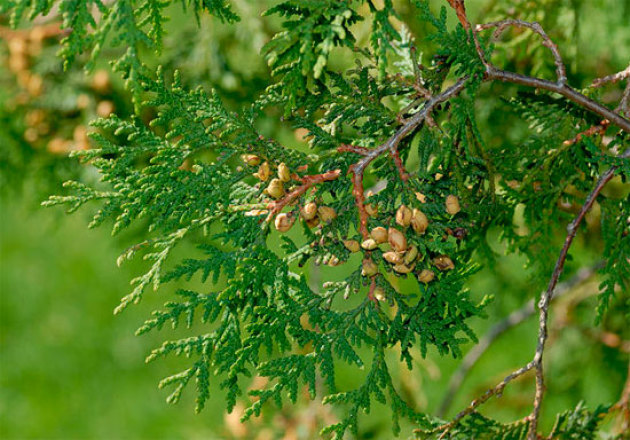
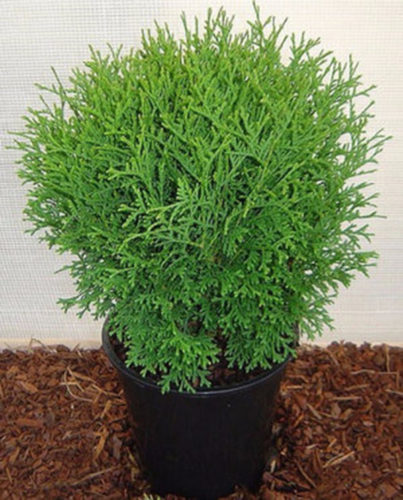
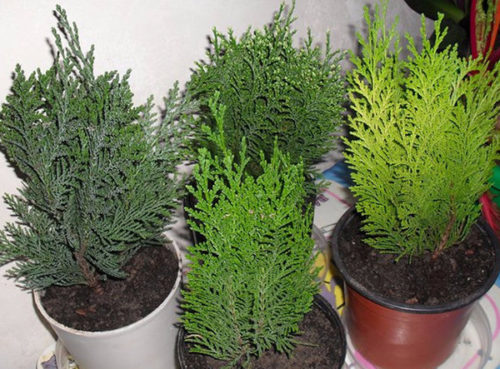

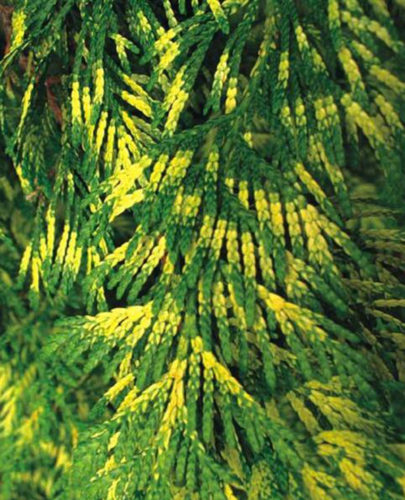



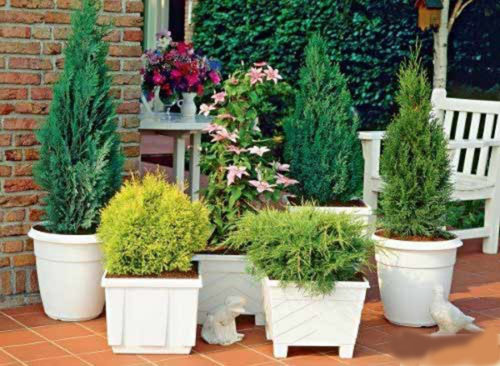

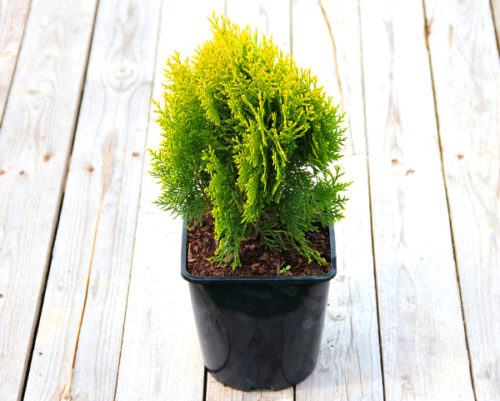

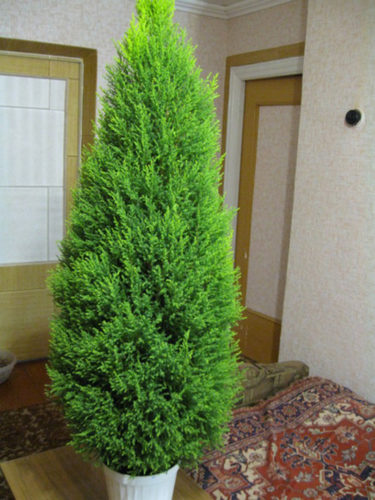
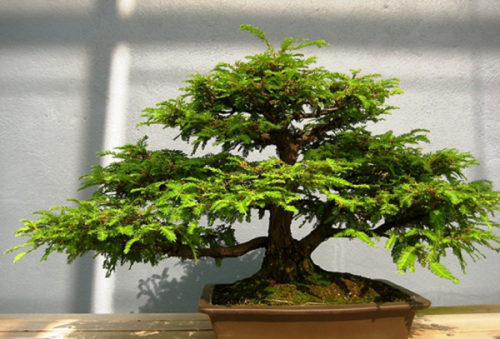














 Start a discussion ...
Start a discussion ...